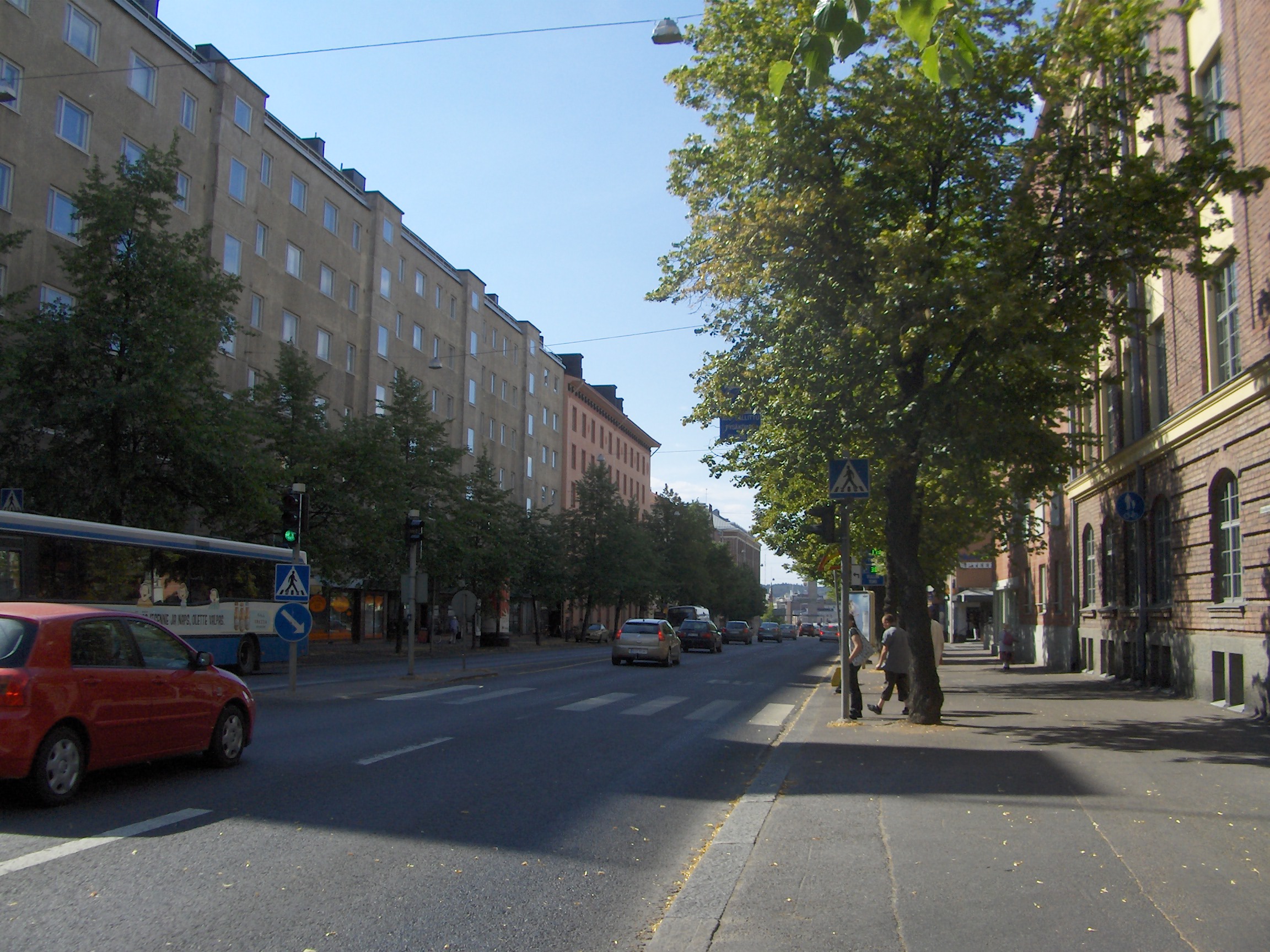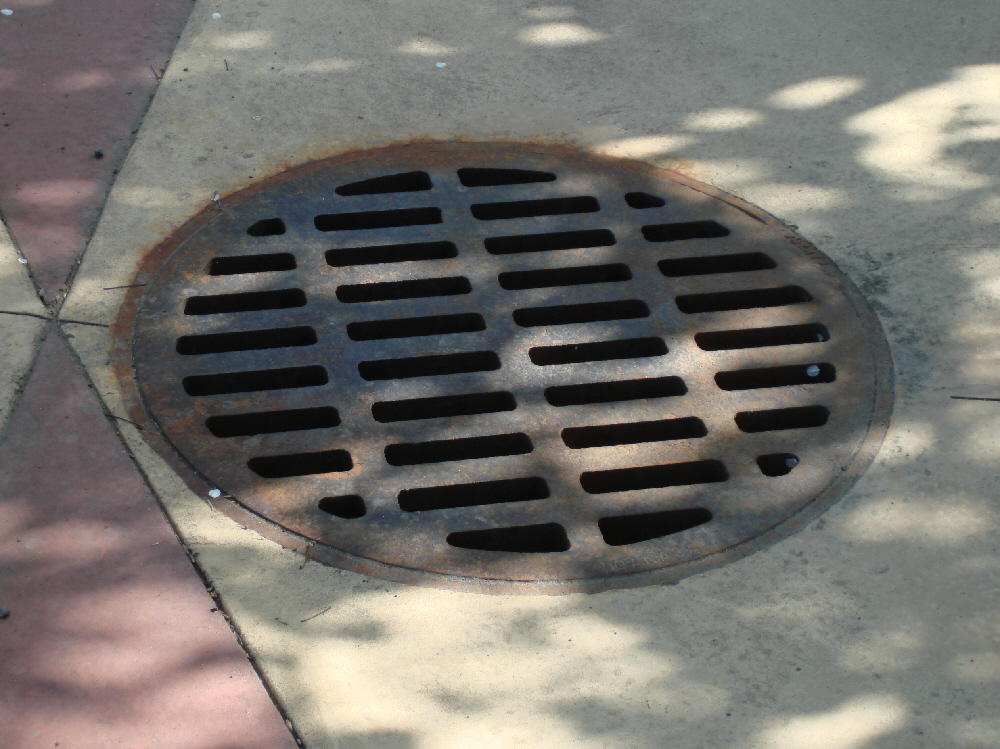|
Posteljooninpuisto
Posteljooninpuisto (Finnish for "Postman's Park") is a French formal garden style park built in the 1930s in central Tampere, Finland, at the corner of Rautatienkatu and Itsenäisyydenkatu. At the corner of the park is the former head post office of Tampere. The park is also internally connected to the Tampere railway station located next to it, which the Finnish Heritage Agency has classified as a significant cultural environment. The park is owned by the city of Tampere.XI-kaupunginosa (Kyttälä), kortteli nro 174 sekä katualuetta, Rautatienkatu 21 (ent. pääposti), rakennusoikeuden lisääminen, kartta nro 8168 (PDF), City of Tampere, 2008. Accessed on 14 September 2020. [...More Info...] [...Related Items...] OR: [Wikipedia] [Google] [Baidu] |
Train Stop At Tampere
In rail transport, a train (from Old French , from Latin , "to pull, to draw") is a series of connected vehicles that run along a railway track and transport people or freight. Trains are typically pulled or pushed by locomotives (often known simply as "engines"), though some are self-propelled, such as multiple units. Passengers and cargo are carried in railroad cars, also known as wagons. Trains are designed to a certain gauge, or distance between rails. Most trains operate on steel tracks with steel wheels, the low friction of which makes them more efficient than other forms of transport. Trains have their roots in wagonways, which used railway tracks and were powered by horses or pulled by cables. Following the invention of the steam locomotive in the United Kingdom in 1804, trains rapidly spread around the world, allowing freight and passengers to move over land faster and cheaper than ever possible before. Rapid transit and trams were first built in the late 1800s to ... [...More Info...] [...Related Items...] OR: [Wikipedia] [Google] [Baidu] |
Finnish Language
Finnish ( endonym: or ) is a Uralic language of the Finnic branch, spoken by the majority of the population in Finland and by ethnic Finns outside of Finland. Finnish is one of the two official languages of Finland (the other being Swedish). In Sweden, both Finnish and Meänkieli (which has significant mutual intelligibility with Finnish) are official minority languages. The Kven language, which like Meänkieli is mutually intelligible with Finnish, is spoken in the Norwegian county Troms og Finnmark by a minority group of Finnish descent. Finnish is typologically agglutinative and uses almost exclusively suffixal affixation. Nouns, adjectives, pronouns, numerals and verbs are inflected depending on their role in the sentence. Sentences are normally formed with subject–verb–object word order, although the extensive use of inflection allows them to be ordered differently. Word order variations are often reserved for differences in information structure. Finnish orth ... [...More Info...] [...Related Items...] OR: [Wikipedia] [Google] [Baidu] |
French Formal Garden
The French formal garden, also called the (), is a style of garden based on symmetry and the principle of imposing order on nature. Its epitome is generally considered to be the Gardens of Versailles designed during the 17th century by the landscape architect André Le Nôtre for Louis XIV and widely copied by other European courts. Éric Mension-Rigau, "Les jardins témoins de leur temps" in '' Historia'', n° 7/8 (2000). History Renaissance influence The ''jardin à la française'' evolved from the French Renaissance garden, a style which was inspired by the Italian Renaissance garden at the beginning of the 16th century. The Italian Renaissance garden, typified by the Boboli Gardens in Florence and the Villa Medici in Fiesole, was characterized by planting beds, or parterres, created in geometric shapes, and laid out symmetrical patterns; the use of fountains and cascades to animate the garden; stairways and ramps to unite different levels of the garden; grottos, ... [...More Info...] [...Related Items...] OR: [Wikipedia] [Google] [Baidu] |
Tampere
Tampere ( , , ; sv, Tammerfors, ) is a city in the Pirkanmaa region, located in the western part of Finland. Tampere is the most populous inland city in the Nordic countries. It has a population of 244,029; the urban area has a population of 341,696; and the metropolitan area, also known as the Tampere sub-region, has a population of 393,941 in an area of . Tampere is the second-largest urban area and third most-populous individual municipality in Finland, after the cities of Helsinki and Espoo, and the most populous Finnish city outside the Greater Helsinki area. Today, Tampere is one of the major urban, economic, and cultural hubs in the whole inland region. Tampere and its environs belong to the historical province of Satakunta. The area belonged to the Häme Province from 1831 to 1997, and over time it has often been considered to belong to Tavastia as a province. For example, in '' Uusi tietosanakirja'' published in the 1960s, the Tampere sub-region is presented as p ... [...More Info...] [...Related Items...] OR: [Wikipedia] [Google] [Baidu] |
Finland
Finland ( fi, Suomi ; sv, Finland ), officially the Republic of Finland (; ), is a Nordic country in Northern Europe. It shares land borders with Sweden to the northwest, Norway to the north, and Russia to the east, with the Gulf of Bothnia to the west and the Gulf of Finland across Estonia to the south. Finland covers an area of with a population of 5.6 million. Helsinki is the capital and largest city, forming a larger metropolitan area with the neighbouring cities of Espoo, Kauniainen, and Vantaa. The vast majority of the population are ethnic Finns. Finnish, alongside Swedish, are the official languages. Swedish is the native language of 5.2% of the population. Finland's climate varies from humid continental in the south to the boreal in the north. The land cover is primarily a boreal forest biome, with more than 180,000 recorded lakes. Finland was first inhabited around 9000 BC after the Last Glacial Period. The Stone Age introduced several differ ... [...More Info...] [...Related Items...] OR: [Wikipedia] [Google] [Baidu] |
Itsenäisyydenkatu
Itsenäisyydenkatu (literally "Independence Street") is an east–west street in the center of Tampere, Finland. It is a significant street connection in the city center of Tampere in terms of transport connections, as it leads from Tampere's railway station to the Liisankallio district in the Tammela district. On the west side of the station, the street continues as the Hämeenkatu street, at its eastern end it meets Kalevan puistokatu, branching into Teiskontie and Sammonkatu. Today, the only crossroads on Itsenäisyydenkatu with cross-street vehicle traffic is Tammelan puistokatu– Yliopistonkatu. Itsenäisyydenkatu was known from the end of the 19th century until the 1950s as the Puolimatkankatu according to the croft named Puolimatka (literally "half way") located in the area. The impetus for renaming the street was the call made by the state to the cities in 1957 to name a significant street Itsenäisyydenkatu in honor of the 40th anniversary of Finland's independ ... [...More Info...] [...Related Items...] OR: [Wikipedia] [Google] [Baidu] |
Tampere Railway Station
Tampere Central Station is a Functionalism (architecture), functionalist building in Tampere, Finland, designed by Eero Seppälä and Otto Flodin, completed in 1936. The station is one of the most important railway stations in Finland. In 2015, the Tampere Central Station was the second busiest railway station in Finland in terms of numbers of passengers, after the Helsinki Central Station. The 36-metre clock tower was later added because the Finnish railway bureau required it (its total height from ground level is about 50 metres). The city's main street Hämeenkatu begins at the railway station, continuing over the Hämeensilta bridge to its western end at the Aleksanteri Church. The Itsenäisyydenkatu (originally called Puolimatkankatu) street begins at the Tammela, Finland, Tammela side of the station, continuing to the Kaleva Church.Iltanen, Jussi: ''Radan varrella: Suomen rautatieliikennepaikat'' (2nd edition), pp. 79-81. Finnish Map Bureau 2010. . Situated in a central loca ... [...More Info...] [...Related Items...] OR: [Wikipedia] [Google] [Baidu] |
Finnish Heritage Agency
The Finnish Heritage Agency ( fi, Museovirasto, sv, Museiverket), previously known in English as the National Board of Antiquities, preserves Finland's material cultural heritage: collects, studies and distributes knowledge of it. The agency is a cultural and research institution, but it is also a government authority charged with the protection of archaeological sites, built heritage, cultural-historically valuable environments and cultural property, in collaboration with other officials and museums. The Agency offers a wide range and diversified range of services, a professional staff of specialists, the exhibitions and collections of its several museums, extensive archives, and a specialized scientific library, all of which are at the disposal of the general public. The Finnish Heritage Agency is attached to the Ministry of Education An education ministry is a national or subnational government agency politically responsible for education. Various other names are commonly use ... [...More Info...] [...Related Items...] OR: [Wikipedia] [Google] [Baidu] |
Tilia × Europaea
''Tilia'' × ''europaea'', generally known as the European lime, common lime (British Isles) or common linden, is a naturally occurring hybrid between ''Tilia cordata'' (small-leaved lime) and ''Tilia platyphyllos'' (large-leaved lime). It occurs in the wild in Europe at scattered localities wherever the two parent species are both native.Rushforth, K. (1999). ''Trees of Britain and Europe''. Collins .Flora of NW Europe''Tilia × europaea''/ref> It is not closely related to the lime fruit tree, a species of citrus. Description ''Tilia'' × ''europaea'' is a large deciduous tree up to tall with a trunk up to . The base of the trunk often features burrs and a dense mass of brushwood. The leaves are intermediate between the parents, long and broad, thinly hairy below with tufts of denser hairs in the leaf vein axils. The flowers are produced in clusters of four to ten in early summer with a leafy yellow-green subtending bract; they are fragrant, and pollinated by bees. The fl ... [...More Info...] [...Related Items...] OR: [Wikipedia] [Google] [Baidu] |
Urban Runoff
Urban runoff is surface runoff of rainwater, landscape irrigation, and car washing created by urbanization. Impervious surfaces (roads, parking lots and sidewalks) are constructed during land development. During rain , storms and other precipitation events, these surfaces (built from materials such as asphalt and concrete), along with rooftops, carry polluted stormwater to storm drains, instead of allowing the water to percolate through soil. This causes lowering of the water table (because groundwater recharge is lessened) and flooding since the amount of water that remains on the surface is greater.Water Environment Federation Alexandria, VA; an American Society of Civil Engineers Reston, VA [...More Info...] [...Related Items...] OR: [Wikipedia] [Google] [Baidu] |

.jpg)




